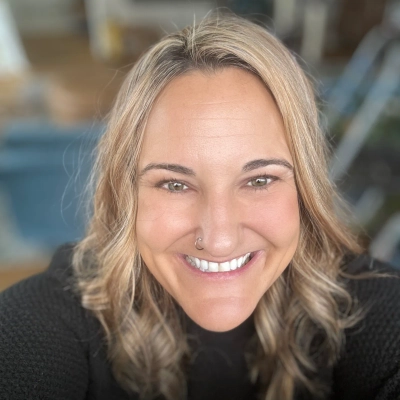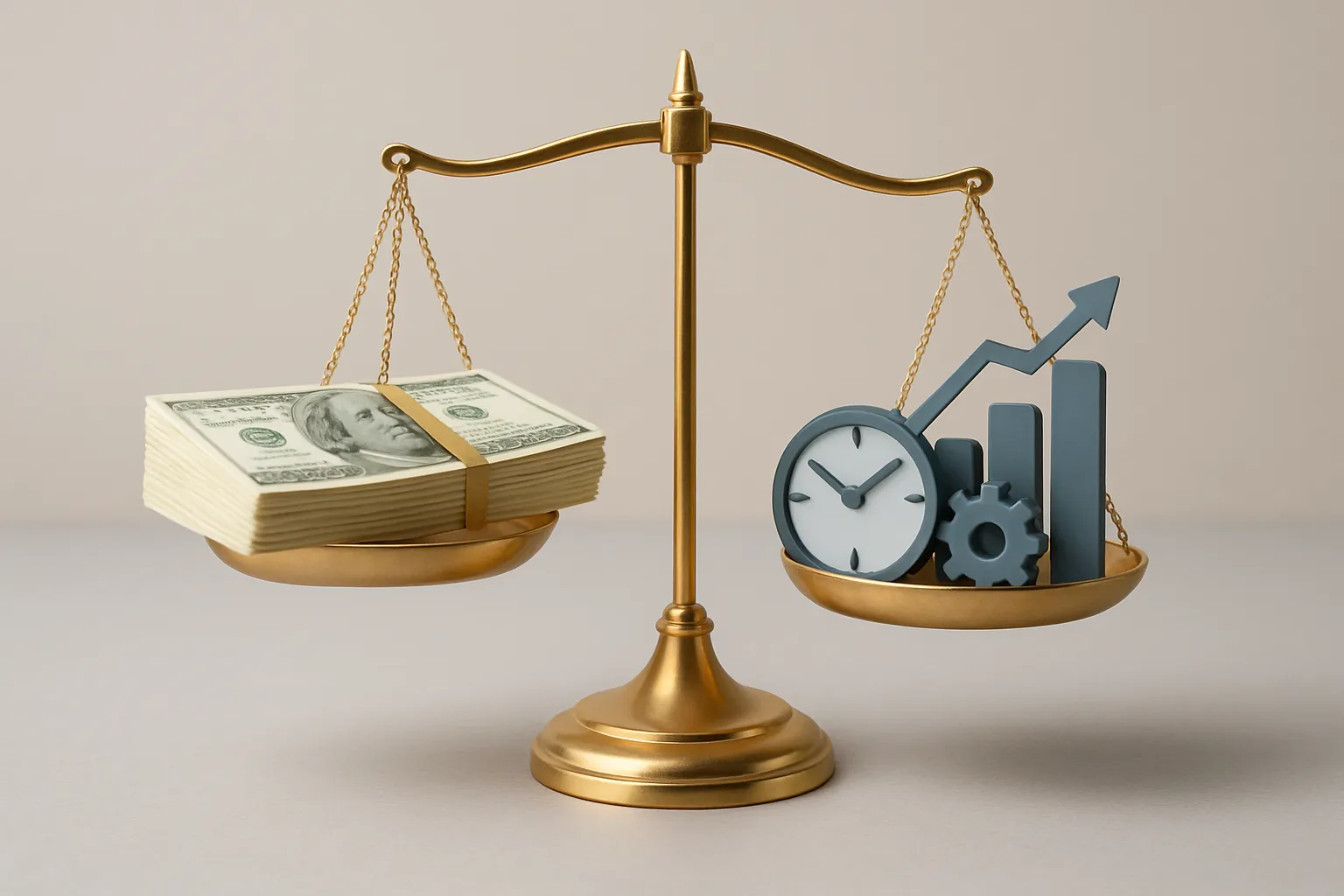Is It Time to Raise Your Prices?
Pricing strategies can make or break a business, and knowing when to adjust them is crucial. This article presents key insights from industry experts on determining the right time to raise prices. By exploring various factors and metrics, businesses can make informed decisions to optimize their pricing structure.
- Match Sales Velocity with Fulfillment Bandwidth
- Test Higher Rates in Specific Segments
- Track Unit Economics and Sales Cycles
- Monitor Expenses, Demand, and Competitors
- Observe Inventory Turnover and Reorder Frequency
- Watch Healthcare Worker Buying Patterns
- Analyze Member Behavior and Satisfaction Scores
- Survey Students on Perceived Value
- Balance Value, Quality, and Mission
- Measure Improved User Outcomes and Retention
- Develop Rare Expertise and Resources
- Align Pricing with Increased Workload
- Add Value Through Thoughtful Product Expansion
Match Sales Velocity with Fulfillment Bandwidth
In my opinion, when you notice that your close rate is high but your delivery team is starting to strain, that’s the clearest signal it’s time to raise your prices. For me, it typically shows up as a mismatch between sales velocity and fulfillment bandwidth (deals are closing quickly, but internally, your team is stretched thin trying to keep up). That gap doesn’t just create operational stress but also gives you a clue that you’re undercharging for the value you’re delivering.
Here’s why that matters:
If clients are saying yes too easily or without any hesitation, they’re not making a value-based decision but are responding to a price point that feels like a deal. While that might boost short-term revenue, it often attracts clients who expect more than they’re paying for. This imbalance eventually erodes margins, strains team morale, and puts pressure on delivery quality.
Raising prices helps restore that balance. It positions your offer to match the true value of your outcomes, attracts more committed buyers, and gives you the margin flexibility to invest back into quality delivery.
When I ran one of my earlier companies, I tested this by raising prices on the next five proposals. Four still closed, and that confirmed what I suspected: we were underpricing ourselves based on what the market was willing to pay. Making that adjustment didn’t just improve our margins but actually filtered in clients who were more invested in the outcome and respected our time.
 Jeff Mains
Jeff Mains
Founder and CEO, Champion Leadership Group
Test Higher Rates in Specific Segments
I don’t have a magic formula for it, but over the years I’ve learned to watch for a few signs.
The first is when the results we’re delivering have clearly stepped up. If a client is getting far more return now than when they first signed on, yet they’re still paying the same rate, something’s off. That usually means our product, the team, or both have evolved beyond the old price point.
Another is when demand starts to stretch us. If the team’s calendar is jammed weeks ahead, raising prices can slow the inflow just enough to protect quality. I’d rather work with slightly fewer customers and do outstanding work than overload and burn people out.
And then there’s the market check. I don’t obsess over competitors, but if I see we’re far cheaper than others who deliver less value, it’s worth asking why. Sometimes the only honest answer is: we’ve outgrown our own pricing.
When I spot two or three of those signals at the same time, I’ll test a higher rate in one market or segment before making it standard. No big dramatic rollout, just a quiet experiment to see what happens. If it sticks, then we go wider. That way, the decision’s based on real behavior, not just a gut feeling.
 Gustav Westman
Gustav Westman
Founder & CEO, Niora AI
Track Unit Economics and Sales Cycles
Having led growth at companies from pre-IPO Sumo Logic to early-stage startups, I’ve learned that pricing signals come from your unit economics, not your gut feelings.
The clearest indicator is when your gross margins consistently exceed 70-80% and customers aren’t pushing back on renewals. At Sumo Logic, we tracked this religiously – when our marketing programs were generating 20% of total ARR with healthy payback periods, we knew our pricing had room to grow. The math was simple: if customers renew without negotiation and expand their usage, you’re underpriced.
Watch your sales cycle length closely. When deals close faster than your historical average and prospects stop asking for discounts, that’s the market telling you there’s pricing power. I’ve seen this pattern repeatedly – companies that track their average deal velocity notice a 2-3 week reduction in sales cycles right before they should raise prices.
The biggest mistake founders make is waiting for competitors to move first. At OpStart, we see clients leave 15-20% revenue on the table because they’re scared to test higher prices. Start with new customers only, measure the conversion impact, then roll it out if the data supports it.
 Maurina Venturelli
Maurina Venturelli
Head of Gtm, OpStart
Monitor Expenses, Demand, and Competitors
There are three areas that I observe before making a decision on increasing the price. First, I monitor the operational expenses. When supplier invoices, cleaning charges, utilities, or seasonal maintenance increase over 8-10 percent on a rolling six-month basis, I can be sure that margins are being squeezed. I plot these changes against our booking rates so that the change does not occur on some assumed basis but on real numbers.
The second indicator is guest demand. When occupancy rates remain above 85 percent for at least two consecutive high seasons with no decline in guest satisfaction, it is an indication that the property is priced too conservatively for its market position. In such instances, an adjustment of around 5 to 7 percent will keep the rates in line with the value offered.
Finally, I make a comparison of the property with direct competitors in the Lake District, rather than with the entire market. I consider location benefits, quality of design, and features like hot tubs or EV chargers. When a similar property three doors down is charging 30 pounds per night more and is still enjoying high occupancy, the difference indicates unrealized potential. All elements are taken into account to ensure that the increase in rates is viable, reasonable, and contributes to both the guest experience and the owner’s returns.
 Marta Pawlik
Marta Pawlik
Creative Director, Interior Designer, Co-Founder & Director, Laik
Observe Inventory Turnover and Reorder Frequency
After launching my spice brand and seeing Peppermate grow, I’ve learned that inventory turnover speed is your best pricing signal. When our premium pepper grinders started selling out within 48 hours of restocking, we knew we were leaving money on the table.
The clearest indicator came when our wholesale partners stopped negotiating our $100 minimum orders and started placing them without pushback. We had restaurant chains specifically requesting our grinders over cheaper alternatives because their chefs noticed the difference in pepper quality.
I track refill frequency religiously – when customers reorder peppercorns faster than expected, they’re getting serious value from fresh-ground spices. Our repeat purchase rate jumped to 65% within six months, signaling we could command premium pricing for that consistent quality experience.
The moment customers start buying your product as gifts without prompting, you’re undercharging. We saw this with our clear-base grinders becoming wedding registry favorites, yet we were still pricing them like basic kitchen tools instead of premium gifts.
 Joseph Rosenblatt PM
Joseph Rosenblatt PM
Owner, Peppermate
Watch Healthcare Worker Buying Patterns
After 16 years running Scrubs of Evans, I’ve learned that healthcare workers indicate when prices need adjusting through their buying patterns. When our top brands like Healing Hands and Maevn start flying off the racks and we’re constantly restocking popular sizes, that’s your signal.
The biggest indicator came when local hospitals started sending their entire departments to us instead of just individual nurses. We went from selling 2-3 pieces per customer to whole teams buying 15-20 uniforms at once. When institutional buyers choose you over cheaper online options, you’re delivering value that justifies higher margins.
I also track seasonal hiring cycles in the CSRA healthcare community since 2008. During nursing graduation season and hospital expansion periods, if we’re selling out of premium lines while cheaper alternatives sit on shelves, that tells me our target market prioritizes quality and fit over price. That’s when I know there’s room to adjust pricing on our high-end inventory.
Supply costs from our manufacturers have increased 30% over the past three years, but our customer retention stayed above 85% even after we passed those increases along. When healthcare professionals keep coming back despite price increases, especially in our tight-knit Evans community, you know your pricing strategy is working.
 Mark Harrell
Mark Harrell
Owner, Scrubs of Evans
Analyze Member Behavior and Satisfaction Scores
After 40+ years in the fitness industry and running Just Move Athletic Clubs across Florida, I’ve learned that member behavior tells you everything about pricing power. When our utilization rates consistently hit 80%+ during peak hours and we have waiting lists for prime time slots, that’s your green light.
The clearest signal came when we introduced our Fit3D Pro Body Scanner technology. Members were so excited about tracking their progress in 3D that we had people specifically asking friends to join just for that feature. When amenities drive word-of-mouth referrals without any marketing push, you’re undercharging.
I also watch our family plan uptake closely – it jumped from 30% to 60% of new memberships over two years. When families are willing to commit multiple members to your ecosystem, they’re telling you the value far exceeds the cost. That’s when we knew we could raise our family plan pricing and add that $10 per additional member fee.
The Medallia feedback platform we use across locations gives us real-time member satisfaction scores. When those consistently stay above 4.5/5 even after price increases, and members specifically mention value in their comments, you know you have room to grow your pricing further.
 Pleasant Lewis JMAC
Pleasant Lewis JMAC
Owner, Just Move Athletic Clubs
Survey Students on Perceived Value
Raising prices? It’s not just about the money. It’s about knowing what’s going on, like reading the vibe at your favorite bar.
At Local Bartending School, we peek at what’s happening outside and inside before changing our rates. Outside, we watch the market, what others charge, and if labor or supplies cost more. If limes or tequila suddenly get pricey, or if we need to pay our instructors more, we notice. We also watch how fast classes fill up. If they’re booked solid for weeks, it might mean we’re selling ourselves short.
Internally, we look at margins and operational costs, but also something less tangible: perceived value. Four times a year, we run a “value perception” survey with our students—before and after they complete their programs. It’s not only about asking, “Was it worth it?” We dig deeper: “What would you have paid for this experience, now that you’ve taken it?” That question alone has led to some eye-opening results.
A few years ago, we ran one of these surveys right after re-launching our advanced mixology workshop. One student told me, “I thought I was signing up for a bartending class, but I walked away with skills that’ll make me money for years. You could have charged double.” That kind of feedback doesn’t just make you smile—it makes you realize you might be underselling yourself.
I remember talking about bumping up prices with the team later on. My operations manager gave me a look and said, “If folks want it, the market’s good with it, and the students themselves say it’s worth more—what’s holding you back?” She had a point. We upped the rate by 12%, and not only did bookings remain solid, but the happiness scores after classes actually went up.
The trick? Don’t just raise prices out of the blue. Let the information, the market, and what your students are saying guide you on when it’s time. And when it all lines up, you’ll just know—it’s time to add a bit more to your price.
 Robert Dunfey
Robert Dunfey
Founder, Local Bartending School
Balance Value, Quality, and Mission
Determining when to raise prices isn’t something I take lightly. At Limeapple, we have to balance the value we provide with the realities of running a sustainable business.
First, we look closely at rising costs, whether it’s materials, manufacturing, or shipping, and how they impact our ability to maintain quality and our commitment to giving back five meals for every item sold. We never want to compromise on those promises.
Second, we listen to the market and watch how our customers perceive the brand’s value. If we’ve introduced meaningful innovations or improved our products in ways that genuinely enhance their experience, that’s a sign the price should reflect that growth.
Lastly, we consider the bigger picture: pricing needs to support our mission long term. Raising prices thoughtfully ensures we can continue delivering quality, expanding our impact, and supporting communities in need.
All in all, I would be transparent with our customers, communicate our “why” clearly, and always lead with integrity. When people understand the purpose behind a change, they’re more likely to support it wholeheartedly.
 Debbie Naren
Debbie Naren
Founder, Design Director, Limeapple
Measure Improved User Outcomes and Retention
We raise prices only after we can quantify that the value has expanded for the user, not just operationally. For example, when we introduced a guided onboarding feature in our symptom tracking app, engagement rates jumped and support requests dropped by nearly half. That told us users were getting more utility with less friction. We also monitored time-to-outcome metrics, like how quickly someone could identify symptom patterns or receive personalized recommendations.
The signal came not from margin pressure, but from sustained improvements in user outcomes paired with stronger retention. Price increases are easier to justify when your service removes more work or doubt than it used to. Internally, we run a simple benchmark: if the average user would miss the feature at the current price point, it is time to reprice. The goal is not to stretch revenue. It is to reflect the shift in what the experience now delivers.
 Maegan Damugo
Maegan Damugo
Marketing Coordinator, Health Rising Direct Primary Care
Develop Rare Expertise and Resources
If we have managed to build expertise or resources that are rare within our industry, that is the time I would consider raising prices. This is what we have done when our team developed certification tools that are much more comprehensive than the usual online course. As an example, we spent over 400 hours of labor and more than $25,000 to develop interactive algorithm simulations of ACLS, PALS, and BLS that reflect actual clinical decision-making. These tools enable providers to train in responding step-by-step to cardiac events, pediatric emergencies, and airway management scenarios without necessarily being in a classroom.
Additionally, we have designed a database where, upon any alteration in the American Heart Association guidelines, the materials of the course will be updated within 48 hours. Only very few providers can promise such a turnaround, and it has taken special coding, medical oversight, and quality checks. That speed and accuracy directly affect patient care because it means our clients are learning the most current protocols every time they log in.
When we have such types of improvements, we price to the cost of maintaining them. The increase is attributed to the added value and exclusivity of the content, which cannot be provided by a generic or outdated certification platform.
 Brian Clark
Brian Clark
Founder and CEO / Certified Registered Nurse Anesthetist, United Medical Education
Align Pricing with Increased Workload
We do not have the market—or the competition—deciding when we will raise our prices. We increase them when the difference becomes too large between what it will cost us to do the job correctly and what we are charging. This occurs when compliance burdens become heavier, risk increases, or we begin to strain because the amount of reporting and accountability clients demand is starting to wear out our internal systems. Every time we are doing more, working more, or guarding more, we are charging more.
When your staff begins making sacrifices to keep the enterprise afloat, then it is time. That is the red flag. I cannot afford to be cheap and replaceable because I would prefer to be expensive and trusted. And when it’s necessary that we raise prices, we raise prices. This is what we do: we show precisely what has changed, what is required to keep things running, and just what it means to cut corners. When a client appreciates what we do, they can stay. Otherwise, we cannot be the right partner.
 Gene Genin
Gene Genin
CEO, OEM Source
Add Value Through Thoughtful Product Expansion
We’re always mindful of how changes in pricing might affect our returning customers. Since our core product has a base price with several optional add-ons, we know it can be tricky to balance value with clarity. Rather than simply raising prices, we’ve chosen to grow our product line slowly and thoughtfully—adding new options that feel like upgrades, not up-charges.
A great example of this was our decision to design and produce a custom gift box. When we introduced it, we didn’t think of it as a price increase, but rather as a meaningful enhancement that added real value. And we were right to trust our instincts—now, more than 30% of our customers choose to include a gift box with their order. It’s been a win-win: a better experience for our customers and a profitable addition for us.
 Ashley Kenny
Ashley Kenny
Co-Founder, Heirloom Video Books
